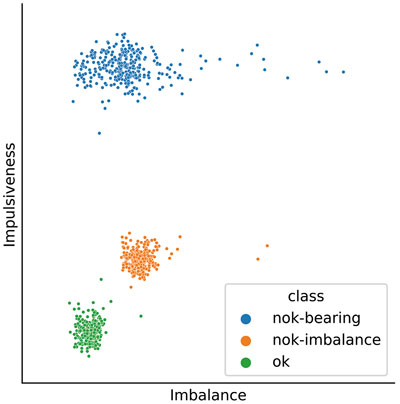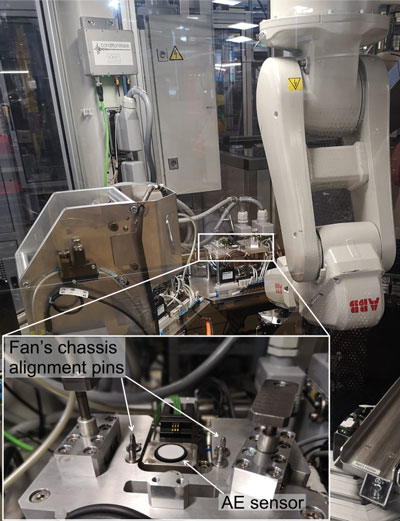The ability of acoustic emission to identify defects in a complex component is finding applications in quality control. Dr Alessandro Demma, director of Omnia Integrity, and Dr Thomas Thenikl of Vallen Systems explain.
Manufacturing industry is undergoing a rapid change with the introduction of robotics and automation processes, known as Industry 4.0.
More efficient and effective ways to control every step of the production process and to verify the quality of the manufactured goods are being introduced in all industries. Quality assessment methods that are non-invasive, rapid and can assure the verification of large components with a single test are ideal for performing quality checks while maintaining production speed.
Acoustic emission (AE) is one of the few methods that allow rapid and effective QA tests within a production line. Acoustic emission can be used to listen for minor damage or defects in a relatively complex manufactured component. Rotating machinery and processes which imply some generation of sound or ultrasound emission are inherently good candidates for verification checks by acoustic emission.
AE sensors are used to detect mechanical waves excited by the specific production process or dynamic use of the component under examination. A large component can normally be verified with only a few sensors. The response from the component can be categorised by a specific “signature” and any response falling beyond the standard signature is rejected.

or pass the fan as OK.
For example, a crimping process induces a specific signature depending on the machine used, materials crimped, and parameters such as speed and pressure. By running a crimping machine while listening to the emitted sounds it is possible to set a desired standard for the manufactured component and its corresponding signature and create an accept/reject criterion that is easy to implement on the production line. The same applies to welding processes, cooling processes and heating processes as well as verification tests of moving parts.
Acoustic emission for inspection of fans
In an interesting automotive application, fans used for cooling external LED lights are inspected automatically by robots at the end of the production line. This replaced a manual system in which fans were inspected by a tester who would listen to the fan in operation.
The cooling fans considered here are relatively cheap components in the LED lighting system. However, malfunction of the cooling fan would trigger a warning to the driver to get the lighting system checked at a dealer immediately.

components on the AE sensor for testing.
Failure of the fan once installed would normally require a full replacement of the LED system, as the LED is not easy to access and repair. Therefore it is important for the manufacturer to identify potential problems before the components are shipped to the client.
The photo shows the system in operation. Each fan is picked up by a robotic arm, placed on an AE sensor and switched on to “listen” to its signature. The AE data is gathered and sent to a ConditionWave devlce (an IoT edge device which communicates using the OPC UA protocol and is powered over Ethernet) which analyses it. At the end of the test, which lasts five seconds, the ConditionWave device sends an input to the robotic arm to accept or reject the component.
If the fan is accepted the robotic arm positions the fan on one side of the line for it to proceed to the next stage of production; if rejected, the fan is positioned in a reject area and does not proceed to the following step.
Advanced classification analysis embedded in the ConditionWave software is used to decide whether the component is accepted or rejected (see graph). Frequency domain information is summarised and displayed as two properties of the bearing, imbalance and impulsiveness. Imbalance of the bearing causes continuous emissions that are modulated over relatively long time periods, while impulsiveness describes burst-like acoustic emissions of high intensity that characterise a certain failure mode.
QA optimisation
Acoustic emission quality assessment of production processes and manufactured components improves reliability while reducing downtime and potential consequential loss. The drive for fully automated processes is quickly becoming a dominant factor in highly industrialised countries and acoustic emission is likely to play a key role in the Industry 4.0 revolution.
Further information:
alessandro.demma@omniaintegrity.co.uk
thomas.thenikl@vallen.de
www.omniaintegrity.co.uk
+44 7555731242

